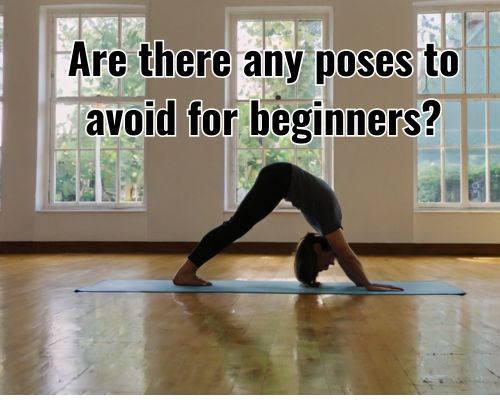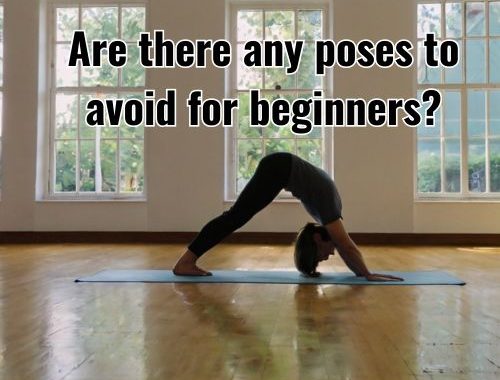Are There Any Poses to Avoid for Beginners? | Yoga Guidance for Mornington Locals
Yoga is one of the most powerful tools for improving flexibility, reducing stress, and enhancing overall well-being. As its popularity continues to rise across Mornington, Australia, many beginners are stepping onto the mat for the first time—eager to experience the balance of body and mind that yoga can offer. But with the variety of yoga poses (asanas) available, one critical question often arises: Are there any poses to avoid for beginners?

The short answer is yes. While yoga is intended for all levels, not every pose is suited for someone just beginning their practice. Understanding which poses to skip initially and why can help new yogis in Mornington stay safe, injury-free, and motivated to continue their wellness journey.
Why Beginners Should Be Selective About Yoga Poses
Jane Benson of Bikram Yoga Mornington highlights that yoga is more than a workout; it’s a discipline that blends physical movement, breath control (pranayama), and mindfulness. However, improper alignment or forcing the body into complex positions too early can lead to injuries—particularly in areas like the lower back, knees, shoulders, and neck.
Mornington yoga instructors often emphasize the importance of starting slowly and building strength and flexibility over time. Beginners should also focus on foundational poses to establish proper technique before exploring advanced asanas.
Common Yoga Poses Beginners Should Avoid (At First)
While every body is different, the following poses are generally advised against for new practitioners, especially without proper guidance or sufficient preparation:
1. Headstand (Sirsasana)
This is often seen as a goal for many aspiring yogis, but it requires significant upper body strength, core engagement, and balance. Attempting a headstand too early can put pressure on the cervical spine, potentially leading to neck strain or more serious injuries.
Alternative: Practice Dolphin Pose or Downward Dog to build shoulder and core strength safely.
2. Wheel Pose (Urdhva Dhanurasana)
A deep backbend that opens the chest and spine, Wheel Pose looks beautiful—but it’s extremely demanding. Without proper flexibility in the shoulders, back, and hips, this pose can result in pinched nerves or pulled muscles.
Alternative: Try Bridge Pose (Setu Bandhasana) instead. It’s beginner-friendly and helps improve flexibility gradually.
3. Lotus Pose (Padmasana)
Though iconic in meditation, Lotus Pose puts intense pressure on the knees and ankles. If your hips aren’t open enough, forcing this posture may damage ligaments over time.
Alternative: Sit in Easy Pose (Sukhasana) with a block or cushion. This allows you to stay comfortable while meditating without risking injury.
4. Full Plow Pose (Halasana)
This inversion folds the body deeply and may compress the neck if not done carefully. Beginners often lack the core control and spinal mobility needed to perform it safely.
Alternative: Begin with Legs Up the Wall Pose (Viparita Karani) to get similar restorative benefits without strain.
5. Crow Pose (Bakasana)
Balancing on your hands with your knees tucked onto your arms can be thrilling—but also quite risky. Without proper wrist strength and balance training, you could easily fall forward, risking wrist injuries or facial impact.
Alternative: Practice Garland Pose (Malasana) or Plank Pose to build wrist and core strength incrementally.
Tailoring Yoga to Your Level in Mornington
In the Mornington Peninsula region, several yoga studios like Bikram Yoga Mornington, Soma Yoga Studio, and Yoga Life Studio cater to beginners with structured classes and experienced instructors. Signing up for an intro class or speaking to a certified teacher before attending a session can help you understand your body’s limitations and potential.
If you’re practicing yoga at home, consider using props like yoga blocks, straps, and bolsters, which are readily available from Mornington health and wellness stores such as Ripe Health or The Natural Path. These tools can make challenging poses more accessible and help you maintain alignment.
Listen to Your Body: Signs You’re Pushing Too Hard
Beginners are often enthusiastic, but it’s crucial to recognize when a pose isn’t working for your body. Here are a few red flags:
- Sharp or shooting pain in joints
- Tingling or numbness in limbs
- Holding your breath unintentionally
- Feeling dizzy or disoriented
Yoga should be energizing, not exhausting. If you notice these signs, gently exit the pose, take a break in Child’s Pose (Balasana), and consult your instructor if possible.
Building a Safe Foundation: Poses Perfect for Beginners
Instead of chasing complex poses, focus on mastering foundational asanas that build strength, flexibility, and awareness. These include:
- Mountain Pose (Tadasana)
- Cat-Cow Pose (Marjaryasana/Bitilasana)
- Warrior I and II (Virabhadrasana I & II)
- Seated Forward Fold (Paschimottanasana)
- Corpse Pose (Savasana)
Practicing these regularly can prepare your body for more advanced movements over time.
Incorporating Mindfulness into Your Practice
Yoga isn’t just about movement; it’s about awareness. Integrating breathing exercises, meditation, and gratitude into your daily routine enhances the emotional and psychological benefits of your practice. Locals in Mornington can enjoy peaceful settings such as Mornington Park or the Botanical Rose Garden for outdoor yoga and meditation, surrounded by nature’s calming influence.
Final Thoughts: Patience and Progress Over Perfection
So, are there any poses to avoid for beginners? Absolutely—but not forever. With consistent practice, guided learning, and self-compassion, many of these poses can eventually become part of your routine. The key is to avoid rushing. Let your body develop at its own pace.
For those living in Mornington, take advantage of the thriving wellness community, beautiful coastal landscapes, and quality yoga instruction. Whether you’re in Mount Martha, Frankston, or right near Main Street, there’s a studio or scenic spot perfect for cultivating your yoga journey.
Frequently Asked Questions (FAQs)
1. Can I do yoga every day as a beginner in Mornington?
Yes, but start gently. Attend beginner-friendly classes and alternate intense sessions with restorative yoga to avoid burnout.
2. How do I know if a pose is too advanced for me?
If you feel pain, can’t maintain your breath, or struggle with balance, it’s a sign to back off or modify the pose.
3. Are there yoga classes in Mornington that focus on beginners?
Absolutely! Studios like Hot Yoga Mornington and Soma Yoga Studio offer intro courses and gentle flow classes specifically for newcomers.

































